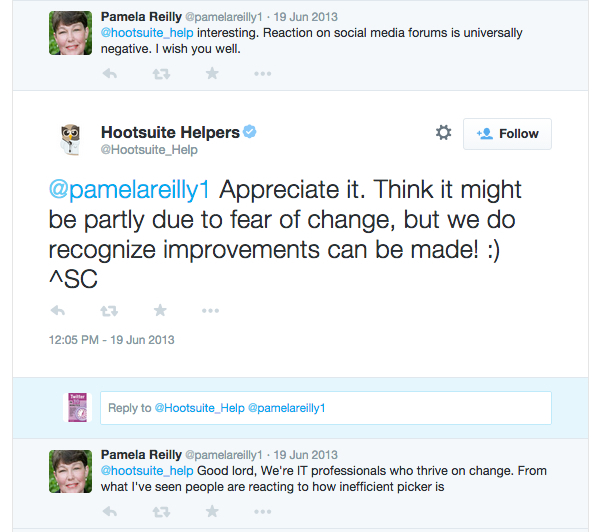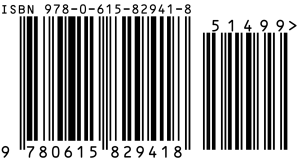I’ve been watching the reaction to Hootsuite’s new social picker with interest. Many power users say it slows them down, and makes their jobs harder. Hootsuite’s official support account has chirpily thanked users for the complaints, but have offered no solution. Maybe that’s because Hootsuite believes users are the problem, rather than its software design choices. Check out this exchange with one user:

Pamela’s response is absolutely correct. I would go a step further and say that Hootsuite’s comment is utterly patronizing. The “fear of change” excuse is something you see trotted out by organizations or management that believe customers are old, stupid, ignorant, and stubborn. It’s often associated with denial that the program or plan itself has faults, and/or hasn’t been communicated well.
Many of the complainers are paying power users who have have explained exactly what’s wrong with the new social picker (slows them down, inefficient, more steps involved, etc.). We have been through many other user interface changes in the past without quaking in our boots or complaining through clenched dentures. I’ve been using Hootsuite for more than 3 years and have been happy with the UX improvements … until now.
So, Hootsuite community managers (or CEO Ryan Holmes), if you happen to read this post: Please don’t talk down to your customers. Listen to what they have to say, and evaluate it seriously. If not, you’re going to start to find that some of us will dump Hootsuite Pro accounts for tools that offer better functionality — without the attitude.



 Are barcodes necessary for self-published books? The answer for authors who are using ebook services such as Amazon KDP, iTunes Connect, and Nook Press, is “no“. If you have an ebook cover for your book, there is no need to place a barcode on it. Barcodes are only intended for people who sell paperback or hardcover books, so the people at the checkout counter or distribution center can scan them.
Are barcodes necessary for self-published books? The answer for authors who are using ebook services such as Amazon KDP, iTunes Connect, and Nook Press, is “no“. If you have an ebook cover for your book, there is no need to place a barcode on it. Barcodes are only intended for people who sell paperback or hardcover books, so the people at the checkout counter or distribution center can scan them.